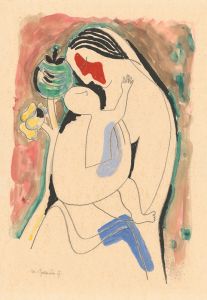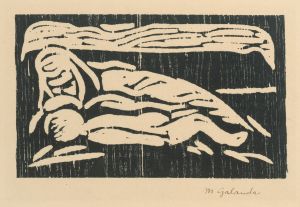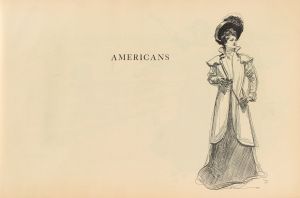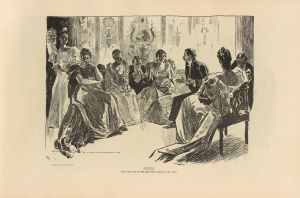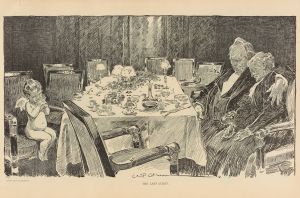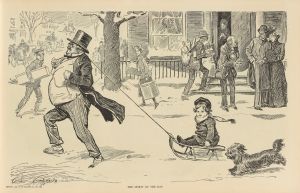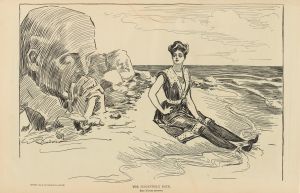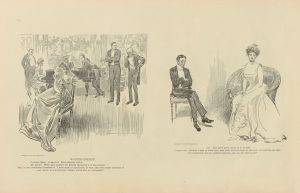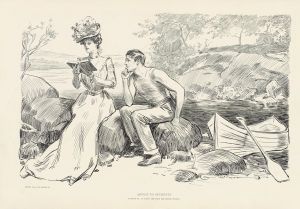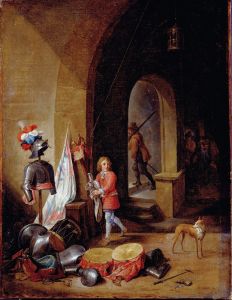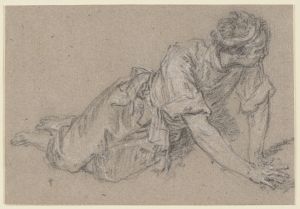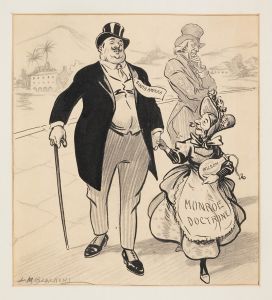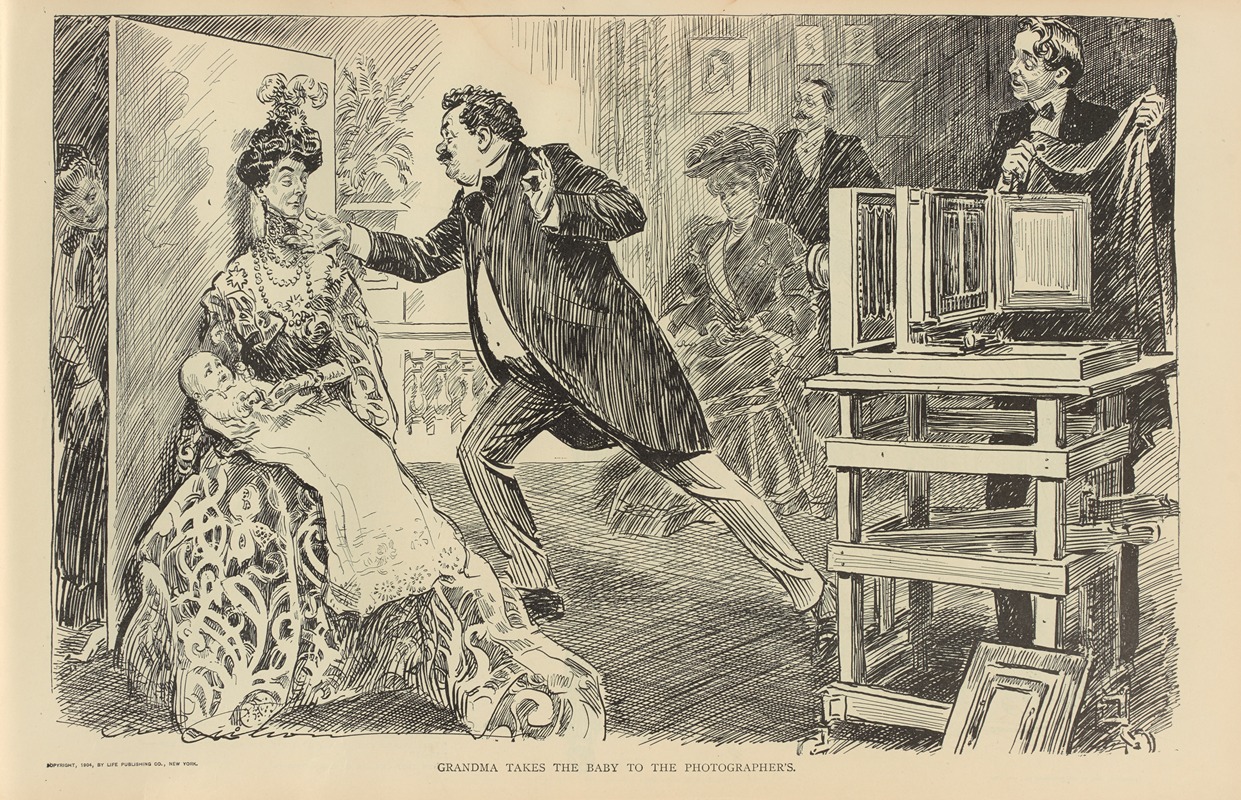
Grandma takes the baby to the photographer’s
A hand-painted replica of Charles Dana Gibson’s masterpiece Grandma takes the baby to the photographer’s, meticulously crafted by professional artists to capture the true essence of the original. Each piece is created with museum-quality canvas and rare mineral pigments, carefully painted by experienced artists with delicate brushstrokes and rich, layered colors to perfectly recreate the texture of the original artwork. Unlike machine-printed reproductions, this hand-painted version brings the painting to life, infused with the artist’s emotions and skill in every stroke. Whether for personal collection or home decoration, it instantly elevates the artistic atmosphere of any space.
Charles Dana Gibson was an influential American illustrator best known for his creation of the "Gibson Girl," a representation of the idealized American woman at the turn of the 20th century. His work was widely published in magazines such as Life, Harper's Weekly, and Scribner's, and he became one of the most celebrated illustrators of his time. Among his many works is the illustration titled "Grandma Takes the Baby to the Photographer's."
"Grandma Takes the Baby to the Photographer's" is a black-and-white illustration that showcases Gibson's keen eye for social commentary and his ability to capture the nuances of everyday life. The artwork depicts a scene that was common during the late 19th and early 20th centuries: a visit to a photography studio. During this period, photography was becoming increasingly popular, and having one's portrait taken was a significant event, often reserved for special occasions.
In the illustration, Gibson portrays a grandmother taking her grandchild to a photographer's studio. The scene is rich with detail, capturing the fashion and social customs of the era. The grandmother is depicted in attire typical of the time, complete with a hat and a long dress, reflecting the formal nature of such an outing. The baby, likely the focus of the portrait session, is dressed in a traditional gown, a common practice for infants during this period.
Gibson's work often included subtle humor and social critique, and "Grandma Takes the Baby to the Photographer's" is no exception. The illustration may suggest the generational differences in attitudes towards photography and the changing nature of family dynamics. The grandmother's careful attention to the baby's appearance and the formality of the occasion highlight the significance placed on capturing family milestones through photography.
The illustration is also notable for its technical execution. Gibson was renowned for his pen-and-ink drawings, characterized by their clean lines and intricate detail. His ability to convey texture, light, and shadow with such a limited medium is evident in this work. The expressions and postures of the characters are rendered with precision, bringing the scene to life and allowing viewers to infer the personalities and emotions of the subjects.
"Grandma Takes the Baby to the Photographer's" is a testament to Gibson's skill as an illustrator and his ability to encapsulate the cultural and social elements of his time. While the specific publication details of this illustration are not widely documented, it fits within the broader context of Gibson's work, which often appeared in popular periodicals and was widely circulated among the American public.
Overall, this illustration not only serves as a piece of art but also as a historical document, offering insight into the customs and values of early 20th-century America. Through his work, Charles Dana Gibson provided a window into the lives of his contemporaries, capturing the essence of an era with wit and artistic finesse.







